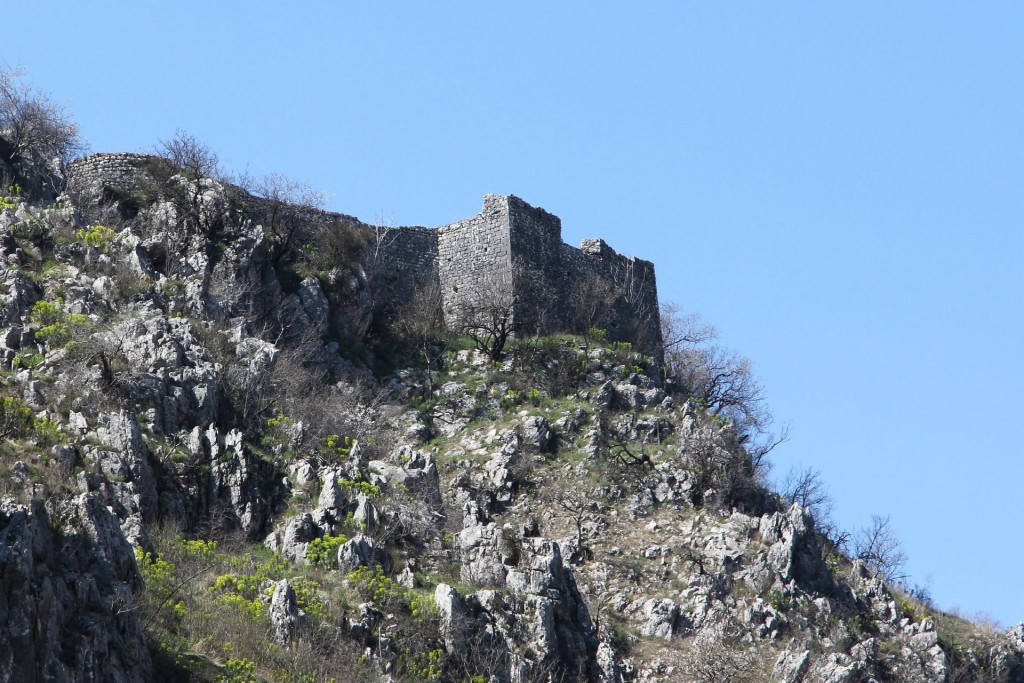 Many times when I passed by the little town of Spuž, I have promised myself that I would, once, climb the Spuška Glavica crest and explore the old fortress on the top (photo 1). I know, Spuž is not exactly a place where you might expect important tourist attractions, but the position of the fortification and its turbulent history certainly make it quite interesting.
Many times when I passed by the little town of Spuž, I have promised myself that I would, once, climb the Spuška Glavica crest and explore the old fortress on the top (photo 1). I know, Spuž is not exactly a place where you might expect important tourist attractions, but the position of the fortification and its turbulent history certainly make it quite interesting.
Spuž is situated on the Zeta river, at a 10 minutes drive from Podgorica, on the old road to Danilovgrad. It was mentioned for the first time in 1379, when King Tvrtko stayed “under Spuž in Zeta”.
 Although Spuž is dominated by the remnants of the Turkish fortress (photo 2) that was built on a conical hill (“glavica”) rising from the middle of the green Bjelopavlići valley, it was not so easy to find an access path uphill. There were no signposts and so we had to ask local people, who were – by the way – astonished that somebody wanted to climb the hill and see the ruins.
Although Spuž is dominated by the remnants of the Turkish fortress (photo 2) that was built on a conical hill (“glavica”) rising from the middle of the green Bjelopavlići valley, it was not so easy to find an access path uphill. There were no signposts and so we had to ask local people, who were – by the way – astonished that somebody wanted to climb the hill and see the ruins.
The first possibility was a kind of donkey trail that started from the parking lot behind the railway station. But this path appeared to be very steep and we were sure that there should be another way, as it seemed to be easier to approach the hill from the other side. So we followed the road in the direction of Martinići (turn left after passing the bridge). Local inhabitants had built fences and private gardens at the foot of the hill, but trespassing was allowed. If you want to see the fort, just ask somebody, people are very friendly and they will certainly show you the path!
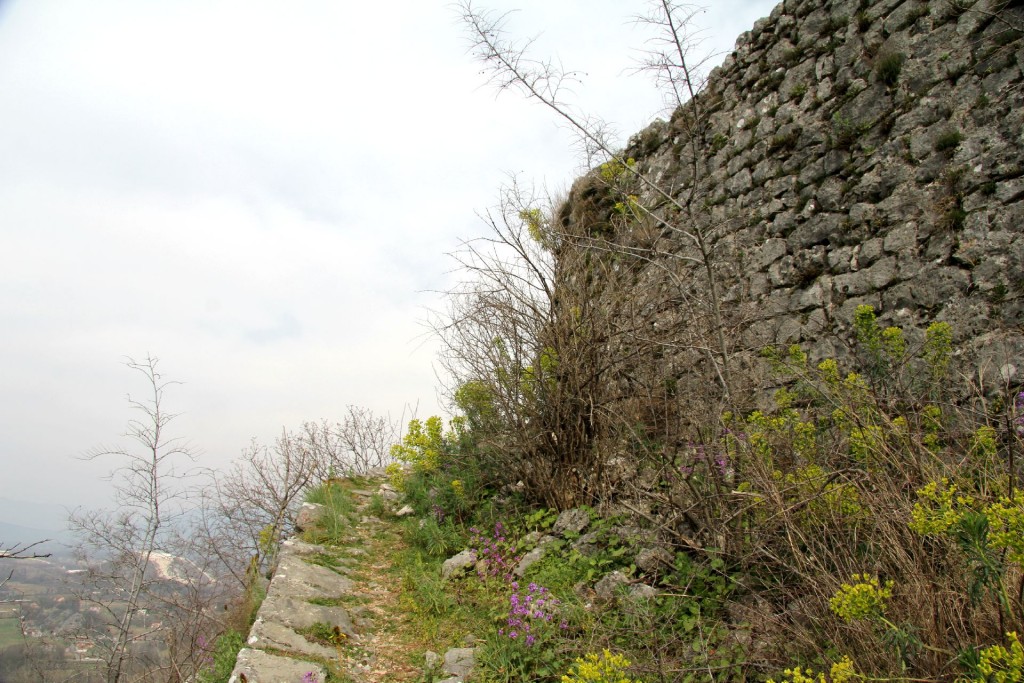 The trail was easy and it took us around 20 minutes to arrive at the top of the hill. Together with Scott from Montenegro Eco Adventures, we followed the narrow path that led us around an old water reservoir further uphill (photo 3). We were surrounded by karst rocks, big yellow spurge (Euphorbia) and other purple flowers. A beauty for the eye!
The trail was easy and it took us around 20 minutes to arrive at the top of the hill. Together with Scott from Montenegro Eco Adventures, we followed the narrow path that led us around an old water reservoir further uphill (photo 3). We were surrounded by karst rocks, big yellow spurge (Euphorbia) and other purple flowers. A beauty for the eye!
When we approached the walls, we had to take a sharp turn left and the path became rather narrow, but this was the only way to enter the main gate (photo 4). It was clear that this fortification once represented an architectural masterpiece, as it was perfectly adapted to the configuration of the steep and rocky hill. And thus the oval main gate (photo 5) was located on the southwestern side, which made it very difficult for the enemy to attack. The fortress could easily be defended, as “visitors” found themselves in an extremely vulnerable position: if they wanted to enter the fort, they had to pass the narrow path around the main tower.
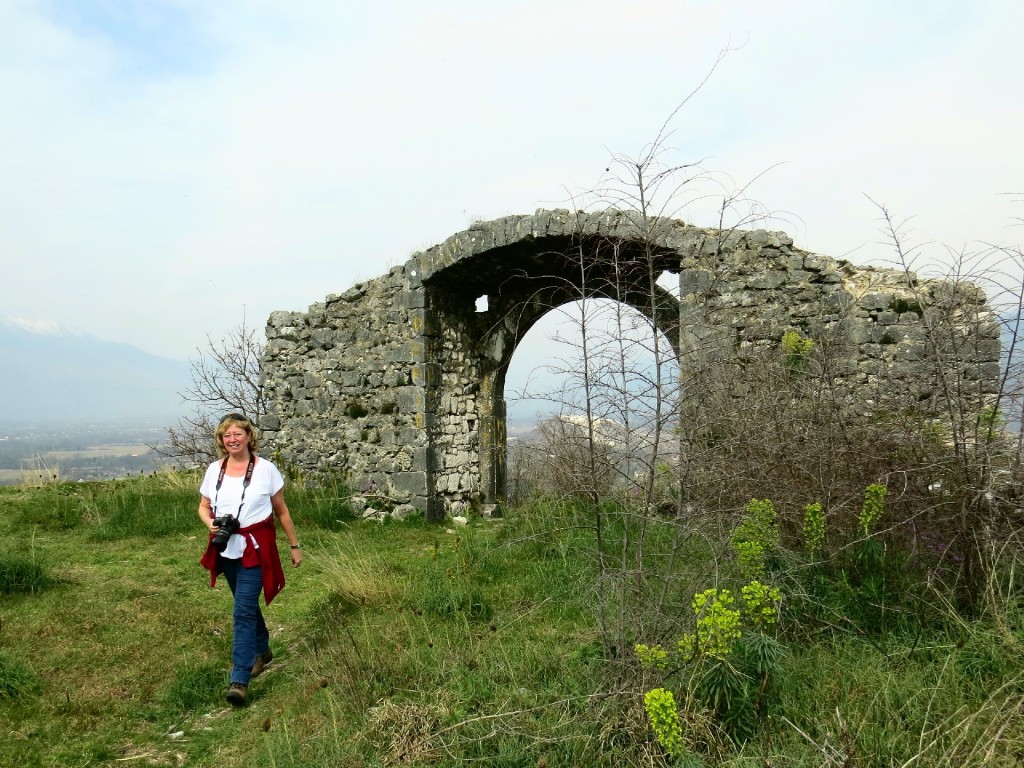 We admired the remnants of the old stone walls and even discovered stairs to some underground rooms. The first corridor was still intact and even disposed of natural light – there was an opening from above.
We admired the remnants of the old stone walls and even discovered stairs to some underground rooms. The first corridor was still intact and even disposed of natural light – there was an opening from above.
From the fortress – at an altitude of around 100 meters – we had amazing views of Spuž (photo 6), the valley and the surrounding hills. It is not surprising that the Ottomans built such an important stronghold here! It enabled them to control the fertile and strategically significant Bjelopavlići plain and the road between Podgorica and Nikšić.
So let me tell you something more about the history of this interesting place: Spuž was conquered by the Turks in the second half of the 15th century. They started to fortify it at the end of the 17th century and the fortress was finished by Hodaverdi Pasha in 1704. At that time the fort had 24 towers, some of which can still be seen today (photo 7). Soon Spuž became an infamous Turkish stronghold, from which numerous punitive expeditions to Montenegro have been undertaken during the next 150 years. The fortress has been a symbol of Turkish power for a long time, but everything broke down in 1878, when the Montenegrins conquered Spuž and the Ottomans disappeared.
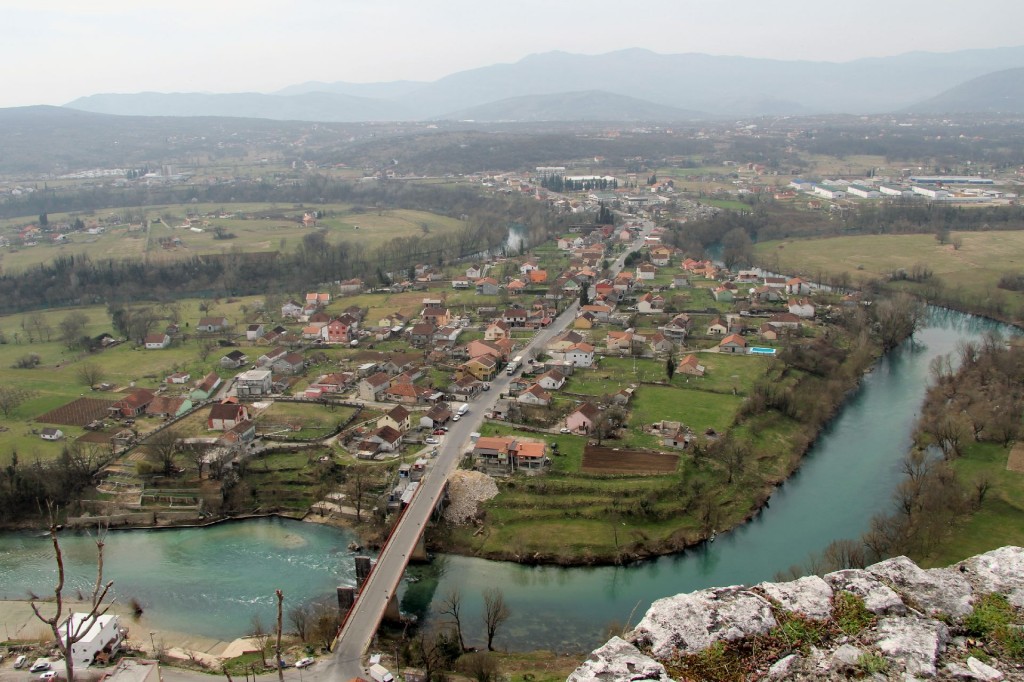 And then… what has happened since then? I don’t know, but it is clear that this once so powerful fortification has been left to the ravages of time. What a pity! Maybe it is too late for restoration, but it might be possible to put some signposts and to mark the path, to clean the environment and to put some information boards for tourists and visitors. Who would be responsible for such an initiative? Maybe the Municipality of Danilovgrad or the Ministry of Tourism could take into consideration this possibility, as it would also be an economic chance for the population of Spuž!
And then… what has happened since then? I don’t know, but it is clear that this once so powerful fortification has been left to the ravages of time. What a pity! Maybe it is too late for restoration, but it might be possible to put some signposts and to mark the path, to clean the environment and to put some information boards for tourists and visitors. Who would be responsible for such an initiative? Maybe the Municipality of Danilovgrad or the Ministry of Tourism could take into consideration this possibility, as it would also be an economic chance for the population of Spuž!

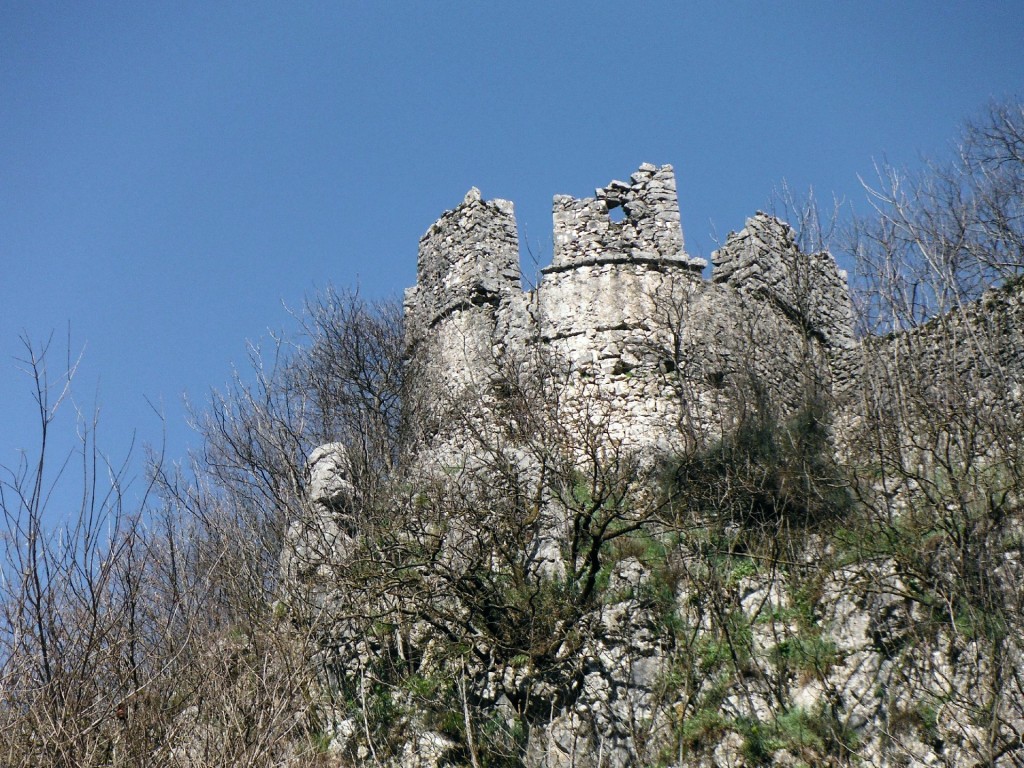
[…] donkey farm in Gradina Martinićka, which is situated at a distance of 17 km from Podgorica, between Spuž and Danilovgrad. The property has a marvelous position, just above the valley of Bjelopavlići. It […]
[…] have already written posts about Doclea (Duklja), about the fortresses of Medun, Spuž (see: The forgotten fortress of Spuž) , Žabljak Crnojevića and Gradina Martinićka … but when my daughter Nataša came up with […]
Very nice. Thank you for nice story.
In Spuź in the year 1876 died turkish general Mustafa Celalettin Pasha, who was Polish-origin, katholic-origin emigrant born as Konstanty Borzęcki. He was wounded fighting Montenegro’s insurgents, then died on 10-th October 1876 and was buried as a Turkish national hero. His grave was placed “in the middle of courtyards of musk”. He was one of the most important theoretic of turkish nationalism.
Spuz is an albanian city until 1878